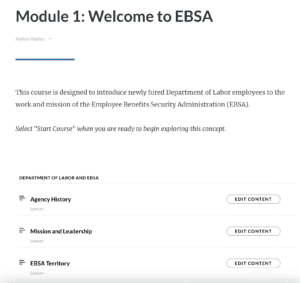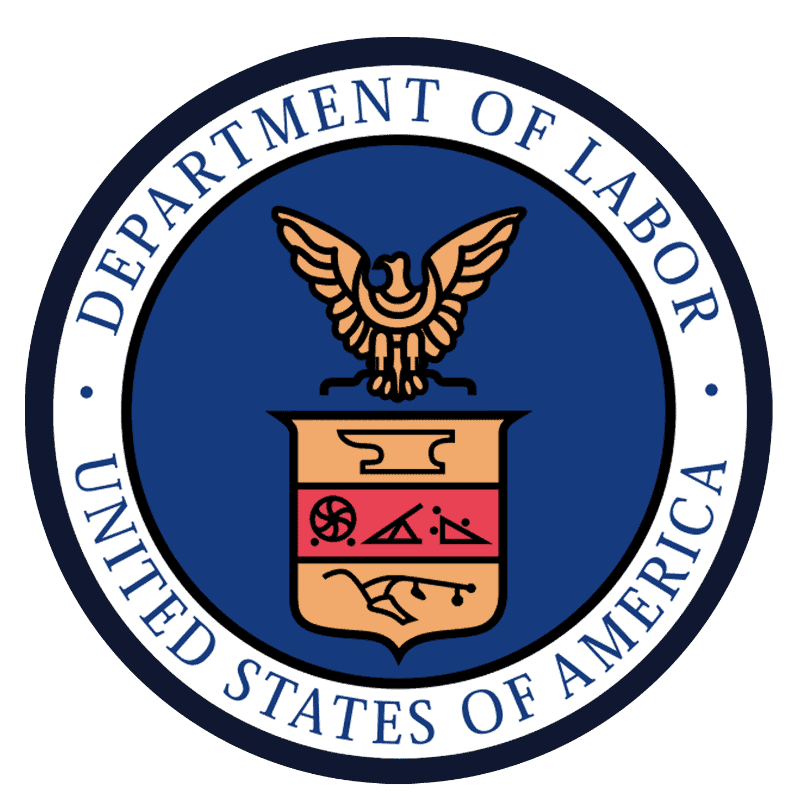As an instructional designer entrusted with developing the employee onboarding training program for EBSA (Employee Benefits Security Administration) employees at the Department of Labor (DOL), I embarked on a journey to create a transformative learning experience. This post delves into my role as an instructional designer, outlining the research, scriptwriting, storyboarding, development, collaboration with subject matter experts (SMEs), feedback incorporation, and more that contributed to a comprehensive onboarding program that empowered EBSA employees.

Understanding the Onboarding Journey
Recognizing the critical role of onboarding in employee success, I embarked on extensive research to gain a deep understanding of the unique challenges and requirements faced by EBSA employees. By examining their roles, responsibilities, and organizational context, I was able to develop a holistic approach that addressed their specific needs. This foundation allowed me to craft a meaningful and impactful onboarding program.
Crafting the Script and Storyboard
To ensure a coherent and engaging onboarding experience, I meticulously crafted the training script. This involved distilling complex information into clear and concise language that resonated with new employees. The script served as a roadmap, outlining the flow and structure of the training program. Building upon this foundation, I created storyboards, visualizing the content and instructional design elements, ensuring a seamless integration of text, images, and multimedia.
Utilizing Articulate Rise 360 for Development
To bring the onboarding training to life, I employed Articulate Rise 360, a powerful e-learning authoring tool. Leveraging its user-friendly interface and interactive features, I developed an engaging and dynamic learning environment for EBSA employees. The platform allowed me to create responsive and mobile-friendly content, ensuring accessibility across various devices. Articulate Rise 360’s flexibility empowered me to design interactive modules that fostered active learning and knowledge retention.
Collaboration with Subject Matter Experts
Working closely with EBSA SMEs was integral to the success of the onboarding program. These experts provided invaluable insights into the intricacies of EBSA’s work, organizational processes, and best practices. Through regular meetings and interviews, I gathered their expertise and integrated it into the training materials. This collaboration ensured that the training content was accurate, relevant, and aligned with EBSA’s goals, allowing new employees to develop a strong foundation within the organization.
Meeting Deadlines and Incorporating Feedback
In the fast-paced world of onboarding, meeting deadlines was crucial. I embraced project management techniques to ensure timely completion of each phase of development. Additionally, I incorporated a feedback loop, seeking input from new employees, SMEs, and stakeholders. By incorporating their perspectives, I refined the training program iteratively, enhancing its effectiveness and addressing any gaps or areas for improvement.
Evaluation and Continuous Improvement
The onboarding journey did not end with the program’s launch. I implemented evaluation strategies, such as surveys, quizzes, and assessments, to measure the training’s impact and effectiveness. Analyzing this data allowed me to identify areas of strength and areas for refinement. By actively seeking feedback and staying abreast of evolving employee needs, I ensured continuous improvement of the onboarding training, aligning it with emerging trends and best practices.
My time as an instructional designer developing the employee onboarding training for EBSA employees at the DOL was a journey fueled by research, collaboration, creativity, and a commitment to excellence. By crafting the script, storyboarding, utilizing Articulate Rise 360, collaborating with SMEs, meeting deadlines, and incorporating feedback, I designed a comprehensive onboarding program that empowered EBSA employees.
The transformative impact of this program on new employees’ integration, engagement, and success within the organization was a testament to the power of effective instructional design. As the onboarding journey continues to evolve, I remain dedicated to ensuring that EBSA employees receive the support and knowledge they need to thrive.


